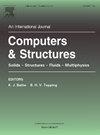Non-parametric ground motion model for displacement response spectra and Fling for Himalayan region using machine learning
IF 4.4
2区 工程技术
Q1 COMPUTER SCIENCE, INTERDISCIPLINARY APPLICATIONS
引用次数: 0
Abstract
Displacement response spectra (DRS) are crucial for seismic design as earthquake damage correlates more with displacements than forces. Previous efforts to develop attenuation relations for DRS have been largely approximate. Permanent displacement or Fling poses significant design, repair and rehabilitation challenges. Consideration of DRS and Fling in seismic design and performance assessment necessitates its accurate estimation. This paper presents the two Artificial Neural Network (ANN)-based non-parametric Ground Motion Models (GMMs). The first model predicts DRS for horizontal and vertical spectral ordinates. The second model focuses on predicting the Fling step in fault-parallel, fault-normal and vertical components. Both the models are developed for the Himalayan region. Given the limited availability of recorded data, ground motion recorded in tectonically similar regions is also utilized to develop DRS GMM. The sparsely recorded Fling data in the Himalayan region is supplemented by additional Fling values simulated using a physics-based approach, alongside data recorded from tectonically similar regions. The simulated Fling values are validated against recorded Fling data. The performance of developed GMMs is compared with existing GMMs and seismic codes which demonstrated its satisfactory performance. The correlation coefficient for ordinates of DRS and Fling are reported to be greater than 0.86 and 0.80, respectively.
基于机器学习的喜马拉雅地区位移响应谱和Fling非参数地震动模型
位移反应谱(DRS)对于地震设计至关重要,因为地震破坏与位移的相关性大于与力的相关性。之前为 DRS 建立衰减关系的工作在很大程度上是近似的。永久位移或 Fling 给设计、修复和重建带来了巨大挑战。在地震设计和性能评估中考虑 DRS 和 Fling 时,必须对其进行精确估算。本文介绍了两个基于人工神经网络(ANN)的非参数地震动模型(GMM)。第一个模型预测水平和垂直谱序的 DRS。第二个模型侧重于预测断层平行、断层法向和垂直分量的褶皱台阶。这两个模型都是针对喜马拉雅地区开发的。由于记录的数据有限,在构造类似地区记录的地动也被用来开发 DRS GMM。除了喜马拉雅地区稀少的地动记录数据外,还利用基于物理学的方法模拟了更多的地动值,以及构造类似地区的记录数据。模拟的跳动值与记录的跳动数据进行了验证。将所开发的 GMM 的性能与现有的 GMM 和地震规范进行了比较,结果表明其性能令人满意。据报告,DRS 和 Fling 的相关系数分别大于 0.86 和 0.80。
本文章由计算机程序翻译,如有差异,请以英文原文为准。
求助全文
约1分钟内获得全文
求助全文
来源期刊

Computers & Structures
工程技术-工程:土木
CiteScore
8.80
自引率
6.40%
发文量
122
审稿时长
33 days
期刊介绍:
Computers & Structures publishes advances in the development and use of computational methods for the solution of problems in engineering and the sciences. The range of appropriate contributions is wide, and includes papers on establishing appropriate mathematical models and their numerical solution in all areas of mechanics. The journal also includes articles that present a substantial review of a field in the topics of the journal.
 求助内容:
求助内容: 应助结果提醒方式:
应助结果提醒方式:


